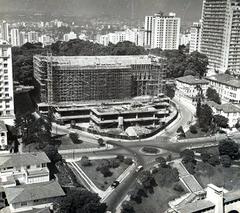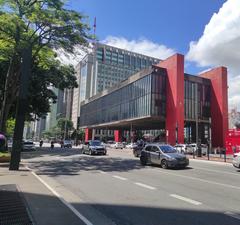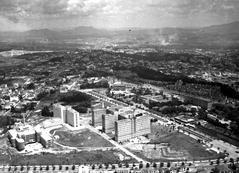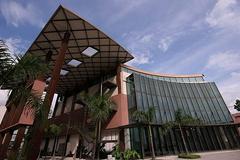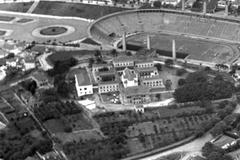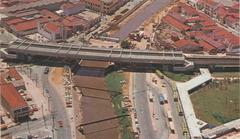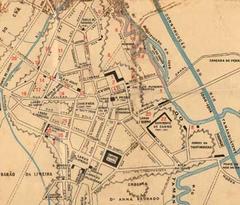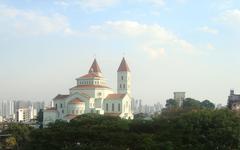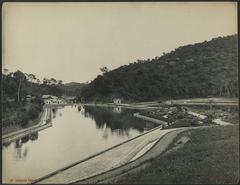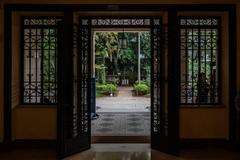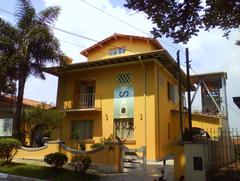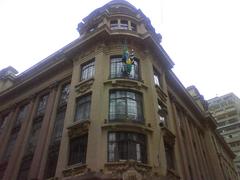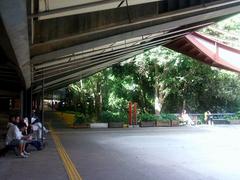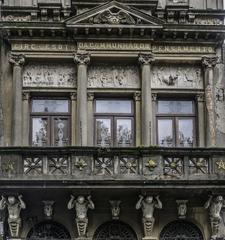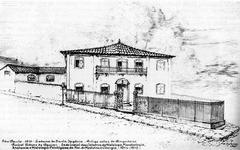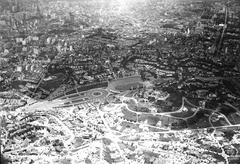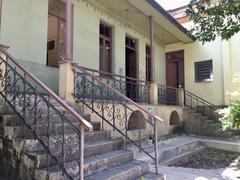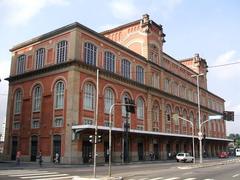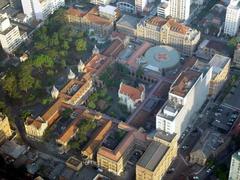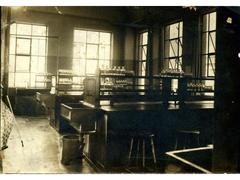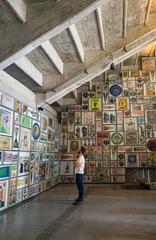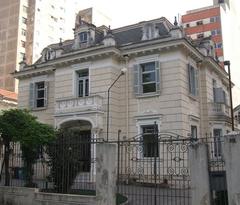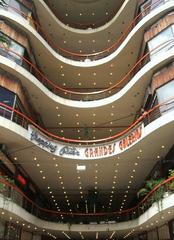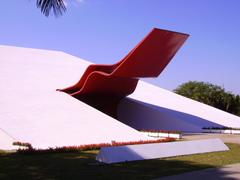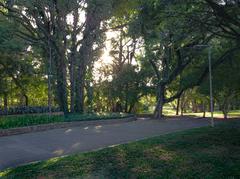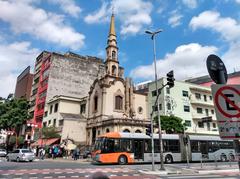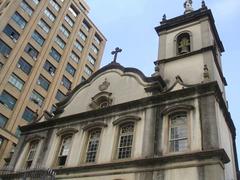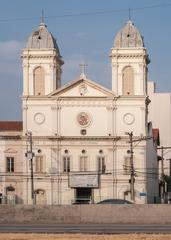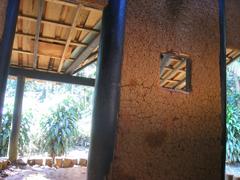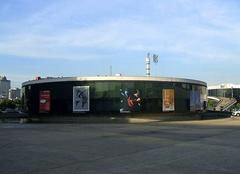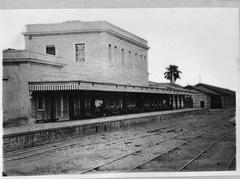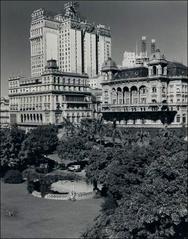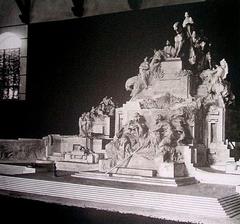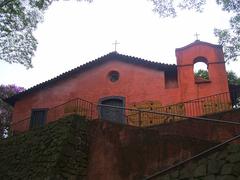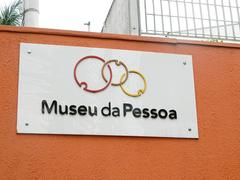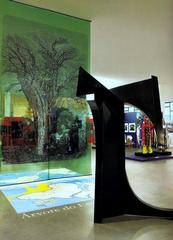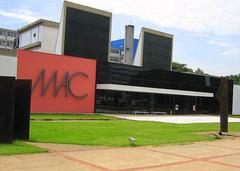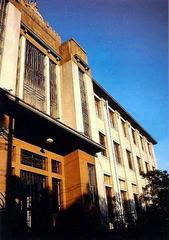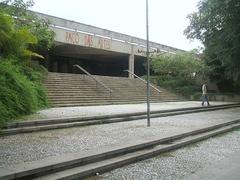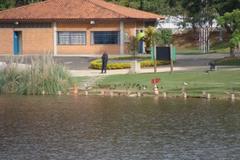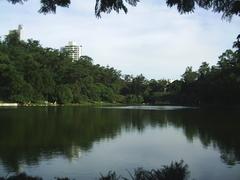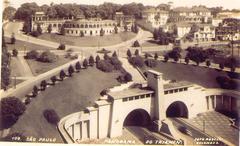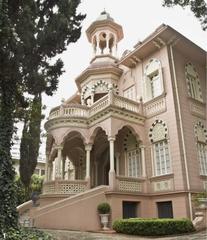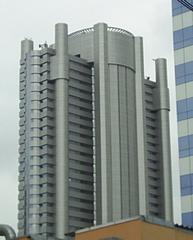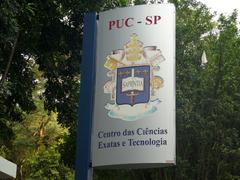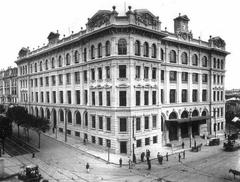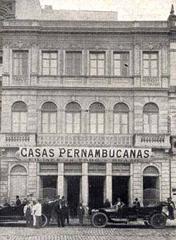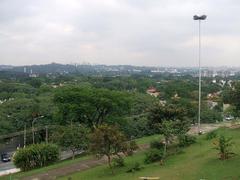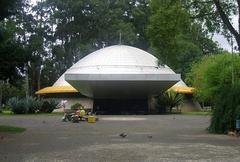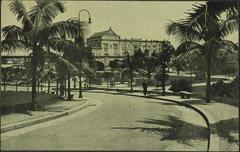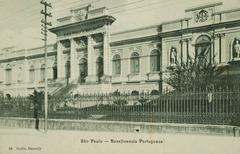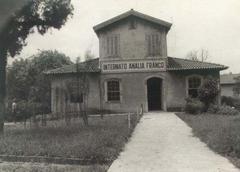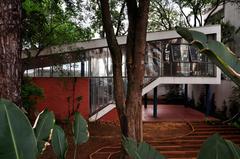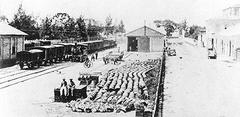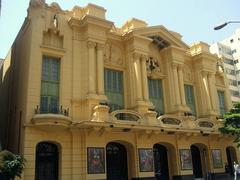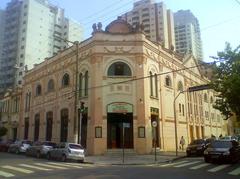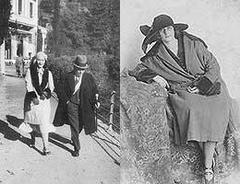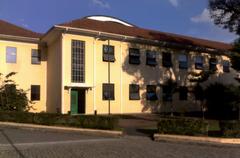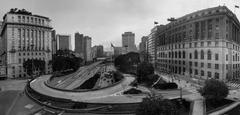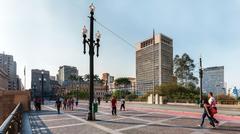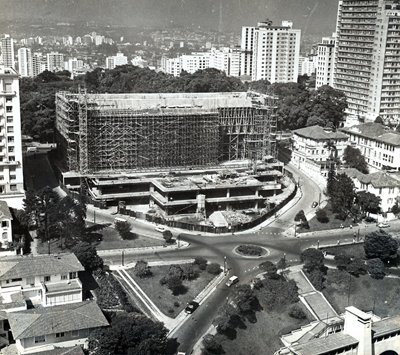
Visiting Hours, Tickets, and History of Museu de Arte de São Paulo Assis Chateaubriand
Date: 16/07/2024
Introduction
The Museu de Arte de São Paulo Assis Chateaubriand (MASP) is more than just an art museum; it is a cornerstone of cultural and educational enrichment in São Paulo, Brazil. Founded in 1947 by Assis Chateaubriand and Pietro Maria Bardi, MASP has grown to become one of the most significant art institutions in Latin America. Nestled on the iconic Avenida Paulista, MASP is renowned for its impressive collection, innovative curatorial practices, and its striking modernist architecture designed by Lina Bo Bardi. The museum’s mission is to make art accessible to all, a vision that is reflected in its extensive educational programs, diverse exhibitions, and commitment to cultural dialogue (MASP Official Website).
From its inception, MASP has played a pivotal role in introducing Brazilians to a vast array of international art. The museum’s collection boasts over 8,000 works, including masterpieces from European, African, Asian, and Brazilian artists. Notable works by Raphael, Van Gogh, Rembrandt, and Goya grace its galleries, making it a treasure trove for art enthusiasts. However, MASP is not just about the past; it continually evolves, hosting contemporary exhibitions and engaging with current social issues through its programs (Visiting MASP - History, Tickets, Hours and More).
This comprehensive guide aims to provide potential visitors with all the essential information they need to make the most of their visit to MASP. From ticket prices and visiting hours to travel tips and nearby attractions, this guide covers every aspect to ensure a fulfilling experience at one of São Paulo’s cultural gems.
Table of Contents
- Introduction
- History of Museu de Arte de São Paulo Assis Chateaubriand
- Visitor Information
- Recent Developments
- Future Prospects
- Conclusion
History of Museu de Arte de São Paulo Assis Chateaubriand
Founding and Early Years
The Museu de Arte de São Paulo Assis Chateaubriand, commonly known as MASP, was founded in 1947 by Brazilian businessman and media mogul Assis Chateaubriand and Italian art dealer Pietro Maria Bardi. Initially housed in a building on Rua 7 de Abril in downtown São Paulo, Chateaubriand’s vision was to create a museum that would bring the best of European art to Brazil, making it accessible to the Brazilian public. The museum’s early collection was largely composed of European art, thanks to Bardi’s extensive network and expertise in the art world.
Architectural Significance
In 1968, MASP moved to its current location on Avenida Paulista, one of São Paulo’s most iconic avenues. The new building was designed by Italian-Brazilian architect Lina Bo Bardi, who was also Pietro Maria Bardi’s wife. The building is renowned for its modernist design and is considered a landmark of 20th-century architecture. It features a striking glass and concrete structure suspended by two lateral beams, creating a 74-meter free span underneath, which serves as a public plaza. This innovative design not only provides a unique aesthetic but also symbolizes the museum’s mission to be an open and accessible space for all.
Growth of the Collection
Over the decades, MASP’s collection has grown significantly, encompassing over 8,000 works of art. The collection includes masterpieces from various periods and regions, such as European paintings from the Renaissance to the modern era, African and Asian art, and a substantial collection of Brazilian art. Notable works include pieces by Raphael, Van Gogh, Rembrandt, and Goya. The museum also houses an extensive collection of sculptures, drawings, prints, and decorative arts.
Educational and Cultural Impact
From its inception, MASP has been committed to education and cultural enrichment. The museum offers a wide range of educational programs, including workshops, lectures, and guided tours, aimed at making art accessible to diverse audiences. In the 1950s, MASP established the first art education program in Brazil, which has since evolved into a comprehensive educational department. The museum also collaborates with schools and universities to promote art education and appreciation among students.
Exhibitions and Curatorial Practices
MASP is known for its innovative curatorial practices and groundbreaking exhibitions. One of the most notable aspects of the museum is its use of glass easels to display paintings, a design choice by Lina Bo Bardi that allows visitors to view the artworks from multiple angles and appreciate their details without the distraction of traditional frames. This method of display has become a defining feature of MASP and reflects the museum’s commitment to challenging conventional museum practices.
The museum has hosted numerous significant exhibitions over the years, featuring both international and Brazilian artists. These exhibitions often explore diverse themes and perspectives, contributing to the global art discourse. Recent exhibitions have included retrospectives of artists such as Tarsila do Amaral, a key figure in Brazilian modernism, and contemporary artists like Ai Weiwei.
Restoration and Conservation Efforts
Preserving the integrity of its collection is a top priority for MASP. The museum has a dedicated conservation department responsible for the restoration and maintenance of artworks. This department employs state-of-the-art techniques and collaborates with international experts to ensure the longevity of the collection. Notable restoration projects have included the conservation of works by renowned artists such as Botticelli and Degas.
Recognition and Awards
MASP’s contributions to the art world have been widely recognized. The museum has received numerous awards and accolades for its architectural design, curatorial practices, and educational programs. In 2017, MASP was awarded the prestigious Mies Crown Hall Americas Prize for its architectural significance. The museum’s innovative approach to art display and its commitment to accessibility have also been praised by art critics and scholars worldwide.
Visitor Information
Ticket Prices
- General admission is BRL 50 for adults.
- Students, teachers, and seniors over 60 can enjoy a discounted rate of BRL 25.
- Children under 10 and persons with disabilities are granted free entry.
- The museum offers free admission to all visitors on Tuesdays.
Opening Hours
- MASP is open from Tuesday to Sunday, 10 AM to 6 PM, with extended hours on Thursdays until 8 PM.
- The museum is closed on Mondays.
Travel Tips
- MASP is easily accessible via public transport. The nearest metro station is Trianon-Masp (Line 2 - Green), which is just a short walk from the museum. Several bus lines also serve the area.
- For those driving, there are parking facilities available nearby, but spaces can be limited, especially during peak hours. Using public transportation or ride-sharing services is recommended to avoid the hassle of finding parking.
Nearby Attractions
- MASP is situated on Avenida Paulista, one of São Paulo’s most iconic streets, which is home to numerous cultural and historical attractions. Visitors can explore the nearby Parque Trianon, a lush urban park perfect for a leisurely stroll. The Instituto Moreira Salles, another cultural institution, is also within walking distance and offers photography exhibitions and a charming café. For a historical perspective, consider visiting the Casa das Rosas, a cultural center housed in a classic mansion.
Special Events
- MASP hosts various special events throughout the year, including art fairs, cultural festivals, and exclusive exhibitions. Check the museum’s official website for current events.
Guided Tours
- The museum offers guided tours in multiple languages, providing deeper insights into the collection and exhibitions. These tours can be booked in advance through the museum’s website.
Photographic Spots
- The unique architecture of MASP provides several excellent spots for photography, particularly the suspended structure and the public plaza underneath.
Recent Developments
In recent years, MASP has continued to expand its collection and enhance its facilities. The museum has undertaken several renovation projects to improve visitor experience and accommodate its growing collection. In 2020, MASP launched a new digital platform, providing virtual tours and online exhibitions to reach a global audience. This initiative has been particularly significant in the context of the COVID-19 pandemic, allowing the museum to continue its mission of making art accessible despite physical restrictions.
Future Prospects
Looking ahead, MASP aims to further its role as a leading cultural institution in Brazil and beyond. The museum plans to continue expanding its collection, with a particular focus on acquiring works by underrepresented artists and exploring new curatorial approaches. MASP also intends to strengthen its educational programs and community outreach initiatives, ensuring that art remains a vital and accessible part of public life.
Conclusion
To sum up, MASP is not just a museum but a hub of cultural and educational activities. Whether you are an art enthusiast or a casual visitor, MASP offers a unique experience that blends history, architecture, and art. Don’t miss out on this iconic São Paulo landmark.
For more updates and to plan your visit, download our mobile app Audiala, check out our other related posts, or follow us on social media. For more information about MASP, you can visit their official website.
FAQ
Q: What are the visiting hours for MASP? A: MASP is open from 10 AM to 6 PM Tuesday through Sunday.
Q: How much are MASP tickets? A: General admission is BRL 50 for adults, with discounts available for students, teachers, and seniors.
